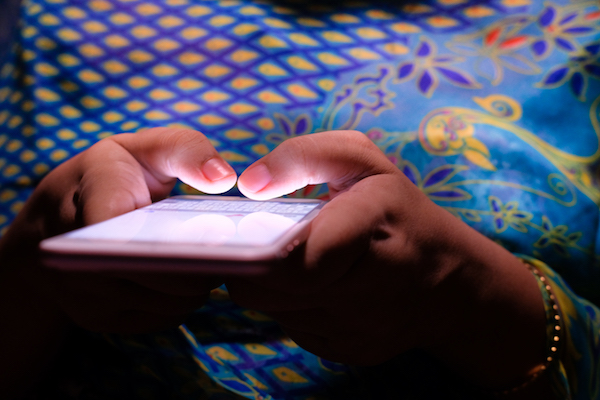The Power of Connectivity: Communicating With Remote and Deskless Employees
By Robyn Hannah
September 2019
The rapid shift of global workforces from office-based to remote setups has raised eyebrows across industries in recent years. Recent research by Blueface indicates that remote work will equal or surpass traditional office work arrangements by 2025, according to Silicon Republic. Coupled with the millions of deskless employees whom we already often struggle to sufficiently engage, many companies are taking a closer look at how this migration affects productivity, morale and the bottom line.
We all know that technology has fundamentally changed the way we consume information. We are constantly accessible. Receiving real-time updates from family, friends, news outlets and work-related content has eroded the separation between work and personal time. And while we may always have connectivity, we have to stop and ask ourselves, “Are we really connecting?”
In order to effectively support and empower deskless and remote workers, companies need to take a fresh look at how they engage remote and deskless workers with communication that fuels connection — not just excessive information for the sake of it. This is essential not just for company morale and productivity, but for the health and wellness of our communities more broadly.
Modern work challenges
Employee disengagement has long been a challenge for employers, but remote and deskless workers are especially vulnerable because they typically lack a physical proximity to their colleagues and a sense of connectedness to the inner workings of the company. In fact, according to a recent survey of remote employees from Buffer, their three biggest struggles are:
- Unplugging after work
- Feeling lonely
- Collaborating or communicating
The combination of these struggles is a recipe for stress and disengagement and, as communication leaders, we have the incredible privilege of correcting these workplace communication failures.
Our work lives are important parts of who we are — it’s often where we find connection, community and belonging. And as social animals, much of our identity and emotional bandwidth is focused on how we contribute to our various communities.
We spend more of our waking hours at work than anywhere else, so it’s vital for us to feel that the work we do is both valuable and valued. For remote and deskless workers, this can be particularly challenging given the lack of physical visibility to the greater organization, executive leadership and important feedback loops.
As employers and communicators, we have a responsibility to support the wellness of our colleagues so they can be their best selves, and can go home from work empowered to contribute to thriving families and communities.
Purposeful, goal-oriented, people-driven employee communication and engagement are fundamental to make sure that people feel equipped to do their best work and are valued as an important piece of a greater picture. When that happens, they carry that feeling of value back to their loved ones and society as a whole.
The same technologies that we lean on to help remote workforces remain productive are also ones that can be leveraged to improve employee morale — but how we use these technologies is what ultimately matters.
Ideas for engaging remote workers
As communicators, we can’t lose sight of the well-being of our colleagues. In order to ensure that employees feel valued — especially remote and deskless workers — companies must communicate their brand values and help employees understand how they can use those values as a framework daily.
Consider these three steps to help support the emotional health and wellness of remote and deskless workers:
- Deliver clear, consistent communication. Employee communication must be delivered to them on the channels and devices that make the most sense for the way they work. When company communication is not timely — when it is irrelevant or inconvenient to access — it sends a message to employees that they’re not seen. It highlights to them that we’re out of touch with what their day looks like. The distribution of your content is as important as the content itself. Before communicating with your workforce, ask: “When my employees receive this content on this channel, does it make them feel informed, connected, valued and seen?”
- Ensure that employees understand the company’s goals, values and mission. We’re all in this together. Employees need to understand how their day-to-day work contributes to the shared overall success of the organization. They’re spending hours away from their families and friends — this time needs to be meaningful. Highlight how employees fit into the big picture and how they play valuable roles in meeting goals and furthering the company’s mission. This sense of common destiny and accomplishment is essential to maintaining team and company cohesion, and is especially vital for remote and frontline employees.
- Enable feedback. Effective employee communication is a two-way street, especially when considering deskless workers. Internal communication programs need to be subject to an ongoing process of feedback, iteration and refinement. Show employees that they matter and build trust by giving them a voice. Then echo back to them what you heard. This process is empowering for employees and allows leadership to optimize. The end result is more engaged workers who feel heard, improved processes and innovation, better collaboration and trust, and increased goal attainment that impacts the bottom line.
Work represents a huge part of our lives and companies have to be good stewards of the power they wield. When we send employees home feeling like they did good work that mattered, they show up better for their families and friends. They have more patience and more energy for community, conversation, creativity — or even a game of catch.
As workforces continue their shift to remote and deskless arrangements, employers need to take great care with how they engage and communicate with employees, ensuring that we leverage technology in service of our humanity — not as a replacement for it. The end result impacts not only the bottom line, but also the wellness of our people and our communities.



